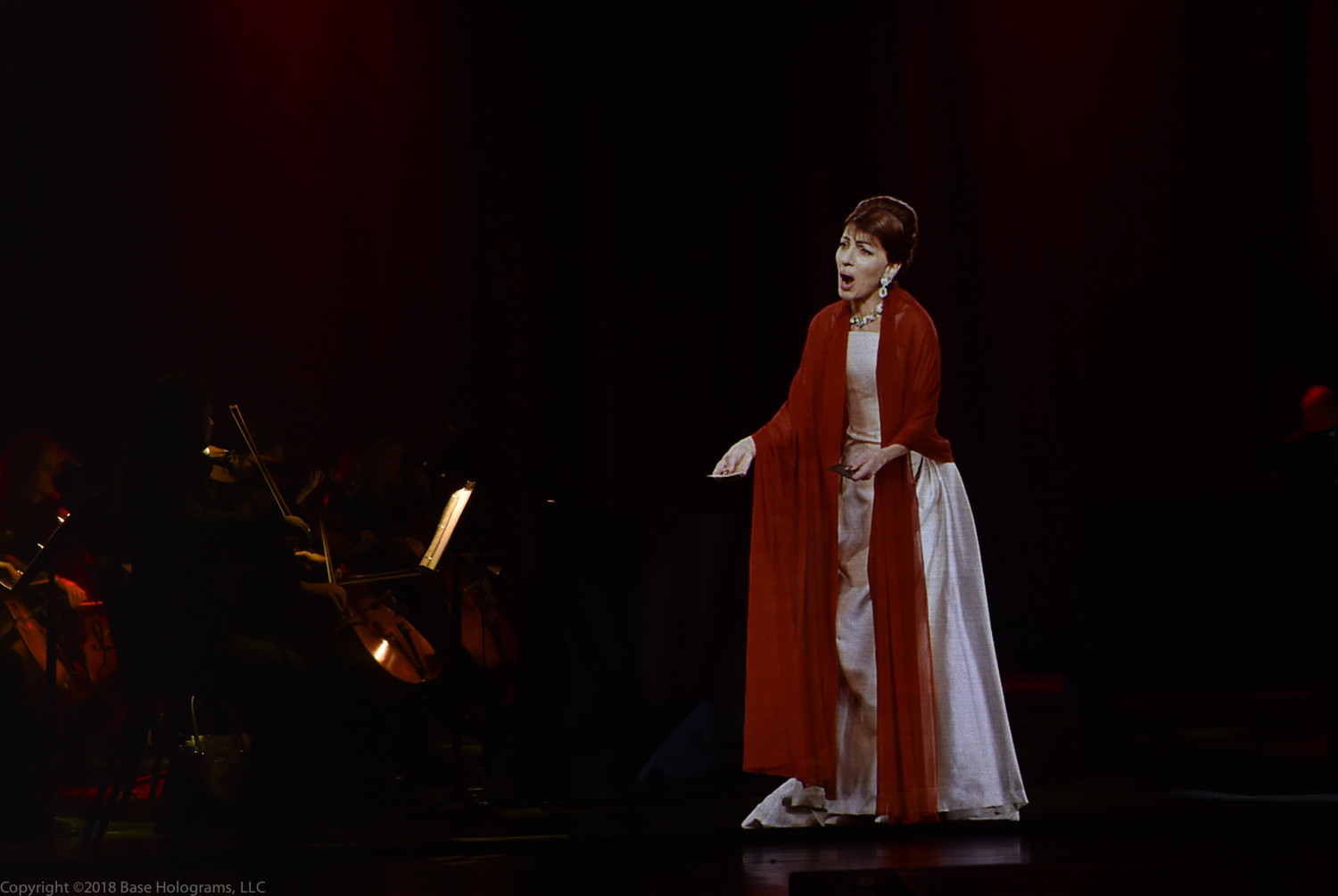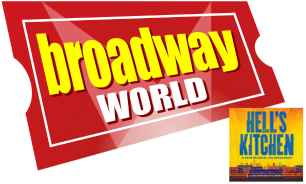Review: CALLAS IN CONCERT at University of Southern California's Bovard Auditorium
 Maria Callas was a unique opera singer with an instantly recognizable voice. As a result, today's opera fans still have a desire to hear her recordings and to try to know what her performances were like. On April 13, 2019, Los Angeles Opera, the Los Angeles Times Festival of Books and BASE HOLOGRAM presented Callas in Concert at the 1200-seat Bovard Auditorium on the campus of the University of Southern California.
Maria Callas was a unique opera singer with an instantly recognizable voice. As a result, today's opera fans still have a desire to hear her recordings and to try to know what her performances were like. On April 13, 2019, Los Angeles Opera, the Los Angeles Times Festival of Books and BASE HOLOGRAM presented Callas in Concert at the 1200-seat Bovard Auditorium on the campus of the University of Southern California.
The concert opened with the Los Angeles Opera Orchestra conducted by Eímear Noone playing Gioachino Rossini's overture to IL SIGNOR BRUSCHINO at a pleasantly brisk pace. I was surprised that only one violinist tapped the bow to make the required percussive sound, but the beats were in place. The appearance of the hologram of Callas wearing an off-white gown drew muted ooh sounds from the audience before she opened with the "Waltz Song" from Charles Gounod's ROMEO ET JULIETTE. The singer's diction was excellent, but there were no titles above the stage and almost no information on the recordings used in the program. I would like to have known the date she made each recording.
One of the most unusual aspects of Callas's career was her ability to sing both the lightest and the heaviest of operatic roles. Juliette is one of the lightest and it contains a great deal of coloratura, so it demands the kind of flexibility heavier-voiced singers seldom produce. Callas said that she had a very heavy voice, "That is my nature, a dark voice shall we call it, and I was always kept on the light side. My teacher always taught me to keep my voice limber." Although the fidelity of the sound was not what we often hear in contemporary recordings, she proved the flexibility of her voice again in 2019.
Following the light and jubilant aria, she portrayed another Shakespeare-inspired character, Lady Macbeth. Opening a letter from her husband, she reads that he is now Thane of Cawdor and witches prophesy that he will become king. In the ensuing aria, Lady Macbeth asks night to wrap the killers in darkness and hide the victim's identity from the dagger as it strikes. With this enormous change in character, the hologram along with the actual Callas recording showed this artist's ability not only to sing this dramatic role but also to create a malicious character with nothing more than her voice, her posture, some gestures, and a small piece of paper. From these two arias, the younger generation could at least get a glimpse of the artist about whom the older opera fans have been talking.
The concert continued with two excerpts from Georges Bizet's CARMEN, The saucy, tempting "Habanera" and the low-lying "Card Song" that predicts the character's impending death. At its end, she threw the cards into the air, and because this performance was magical, they floated down like feathers. Although Callas never portrayed Carmen on the stage, her recording has always commanded attention, as it did here.
Then it was time for another meeting with Giuseppe Verdi's Lady Macbeth, this time dealing with memories that cannot be soothed or forgotten. When the hologram rubbed her hands, I think we all perceived a spot that would not go away. Verdi's fascinating ballet music for MACBETH ended the group of selections. This might have been the place to insert an intermission. There was no dramatic reason not to have a pause, but we never got one.
Then came the pièce de résistance, the aria I played until the record wore through: "Ebben ne andró lontano" from Alfredo Catalani's snow-and-ice opera, LA WALLY. Although written in the 1890s, it fit Callas's voice perfectly and her singing was sheer beauty. I wish the program had included more of the infrequently heard Bel Canto arias she recorded. We did get to hear Callas's sweet and innocent rendition of Ophelia's Mad Scene from Ambroise Thomas's HAMLET.
For a finale, the Los Angeles audience heard "Suicidio" from Amilcare Ponchielli's LA GIOCONDA. I wonder if there was a message here. We will never know whether or not Callas wanted to die when her career was heading downward and her love affair fell apart. This recording, however, was made in a more prosperous time and it reminded the audience that there are wonderful operas that deserve to be played again when we have the voices for them. LA GIOCONDA is a current success at the Liceu in Spain. Callas brought her public many operas that faded after she left the opera scene. Perhaps it's time to revisit them.
Speaking of Callas, Sir Rudolf Bing noted that she imbued every part she sang and acted "with incredible personality and life. One move of her hand was more than another artist could do in a whole act." With the aid of a hologram, the Los Angeles public saw through a glass darkly, but nonetheless today's opera goers again saw and heard something of Maria Callas in performance.
Photo of Callas body double by BASE HOLOGRAM.
Videos
